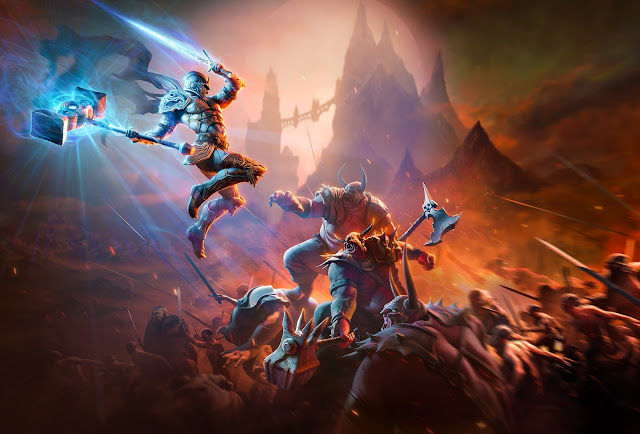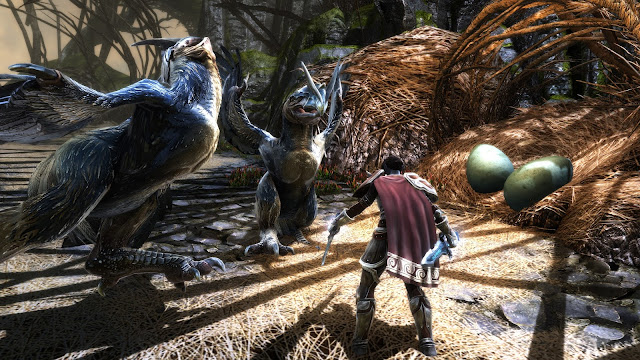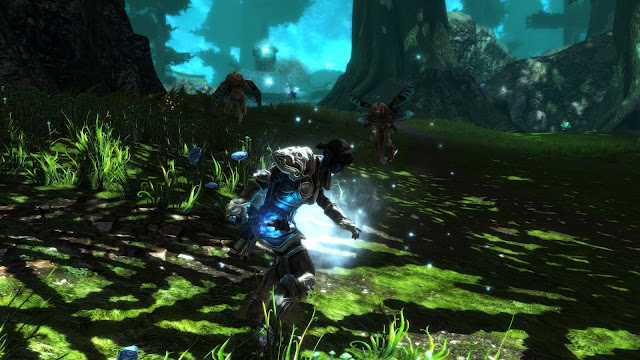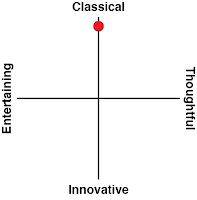Review by Matt S.
Kingdoms of Amalur is one of those legendary game failures… at least commercially. It was new and completely original, being based in no existing world or lore, and as a new venture, it was decadent in its ambition and scope. By Miku was it vocal about being the scrappy upstart on the RPG block, too. It brought together one of the legends of fantasy literature, R.A Salvatore, one of the greats of comic art in Todd McFarlane, and a RPG development veteran in Elder Scrolls IV: Oblivion lead designer, Ken Rolston. It was a game so big that the feeling right up until release was that it couldn’t possibly fail, and for the last piece of the puzzle, EA, the behemoth publisher, was throwing its weight behind the marketing and distribution. Such was the scope of Amalur that it needed to shift two million units to just break even.
It sold just over half of that. It would be the end of the developer. When the state of Rhode Island in America needed to get some of the seed money that it had thrown to startup developer, 38 Studios, to adopt it as the company’s home state, the studio was unable to pay, leading to such memorable headlines as How Kingdoms of Amalur: Reckoning Nearly Bankrupted An Entire State. All told, the studio managed to spend $133 million before it went into bankruptcy back in 2012. Some of those expenses are fascinating insights into hubris (as per the Polygon report above the company’s leadership managed to spend nearly a million in travel and entertainment, before the company was even making revenue from its first game). The collapse of the company is one of those frequent reminders that American states need to stop throwing money at companies at the expense of the well-being of the population. It’s a famous story.
And it’s a pity that the story of Kingdoms of Amalur’s commercial failure has come to dominate the discourse around the game, because as we have now been reminded of with Kingdoms of Amalur Re-Reckoning, this is a really, really good game. THQ Nordic now has the license (which I can only imagine was dirt-cheap) as part of the company’s efforts to own just about every defunct property out there. This remaster has clearly been released to gauge whether there’s potential in the property going forward rather than a grand effort at a top-to-down remake, but I hope THQ Nordic has better luck and subsequently comes to the realisation that in the hands of a more sober developer there is potential in it as a property, because there is real potential in it as a franchise.
Kingdoms of Amalur is basically structured like a single-player MMO. That is to say that it is the best way to play an MMO, since there aren’t people around trying to flog off flaming swords for “$1K!!!!!!111one!1!”, nor spamming the dance emotes. There’s no chance to come across people chilling in the middle of frozen tundra in bikinis (if you ever do spot someone doing that in Final Fantasy XIV, be sure to wave, as you’ve probably just met me). Those immersion-breaking behaviours of human players do tend to ruin the ambience of a fantasy world of high adventure. Wandering around Kingdoms of Amalur feels eerily quiet with the absence of human “AI” input, but it’s immediately a more cohesive experience as a result, allowing you to drink in the atmosphere and world even as you go about doing all the standard MMO things.
And what atmosphere Kingdoms of Amalur has. Even back in 2012, this thing had a fantastically strong vision behind it. It was clearly inspired by the aesthetics of fairy tales, with a Grimm Brothers-like sheen washed over every environment so that it looks both larger than life and quite intimidating at every turn. From forests with trees so high that you can’t spot the canopy, through to quaint little hamlets seething with the worst of humanity’s impulses, Amalur is dark, but not viciously so, as so many “mature” games today are. I’ve seen many compare it to the World of Warcraft look over the years, and superficially the resemblance is there, but where the visual world in an MMO is the backdrop to the adventures, player interactions, and combat, with Amalur, it’s designed to be much more integral to the experience. The way the world is split up by winding corridors of roads and sheer cliffs (or other arbitrary barriers) is a lovely touch, too. Even having played the game before on its original release, I found myself excited when it was time to move on and explore another part of the world, winding my way around with the road and just waiting for the next giant area (and vibrantly different to what came before) to open up before me. Open worlds are bigger now than they were back in Amalur, but Amalur’s world tantalises the explorer in us in a way that few others achieve.
To get the elephant in the room out of the way – the visuals is the only area where Re-Reckoning has had any work done. The game itself has all the DLC that the original had released for it, and acts as a “complete” edition, but anyone expecting a full-on remake will be disappointed. This is a game that was always about art direction more than technical brilliance, so environments look every bit as gorgeous now as they did then (though the moments of pop-in in the larger areas was a bit of a disappointment). However, the character models haven’t aged well at all, and the game lacks the cinematic sheen of bigger budget blockbusters today. Chatting with a washed-out face that has been poorly lit, with the camera cutting from one odd angle to the next with each new sentence are all direction issues that we wouldn’t even expect from the B-tier RPG. It’s easy enough to forgive within the broad context of the experience, but it’s also a reminder that Amalur is old enough that a “HD remaster” isn’t inherently enough to spruce it up, even if it’s a boost to 4K resolution.
People who are new to Amalur might initially find the quest structure exhausting, too. MMOs are more about busywork than mastery of the moment-to-moment narrative, and Amalur is filled with sidequests, “faction quests”, tasks and other story elements that are all glorified fetch quests or straightforward hunting quests. In a world subsequent to The Witcher 3, we’re more used to every little demand placed on us by NPCs to have some kind of worldbuilding resonance, and Amalur can feel even more like a grind now than it did when it was new. But I actually like it. There’s a purity to Amalur’s vision, and there are so many quests thrown at you that, once you get a hang of the journal system (which is admittedly menu-driven and less than ideal from a UI perspective), you’ll be completing quests at such a rate that you’ll constantly be feeling like you’re making progress, no matter how piecemeal you approach play sessions. There are just enough quests and tasks to complete in each area before the game does its best to drive you on to the next area, too.
While the quest narratives feel incidental, the overarching narrative of Amalur is excellent, featuring deathless fey on a warpath, a protagonist that was also somehow brought back from the dead, their ability to manipulate and defy fate, as well as betrayal, assassination, dragons and plenty more. It’s high fantasy, page-turning stuff, and, thanks to the 10,000-year history of the world reportedly written by R.A. Salvatore, the game offers a real sense of context and lore which most lesser RPGs lack. Along with Mass Effect, Dragon Age and The Elder Scrolls, Amalur is one of the few video games to make book collecting and reading a hobby within the game into itself, with each of those stories contributing in a meaningful sense to the idea that this is a world that has been built on heritage and centuries of wisdom.
With that being said, Kingdoms of Amalur also falls into the trap of being thematically shallow (and in fairness, The Elder Scrolls and Dragon Age track along there). Sure, there’s the obligatory nods to class warfare and racism that the game handles in an obligatory manner (i.e. you, being the hero, crash on through each and every problem and regardless of what direction you take you’ll get applause for your righteous bravery). There’s the occasional moral choice to make and the game throws a half-hearted effort in to give you both sides of the argument (though ultimately it doesn’t care which you side with). The page-turning narrative is a wild ride while it lasts, but it’s also the kind of game that once you put it down, you’ll quickly forget about it… until a publisher re-releases it to remind you of just how much fun it is on that more base level. I am sure that after reading this paragraph someone will angrily type down on their keyboard about how games are meant to be fun so how dare I suggest that they can also be thought-provoking, but I do so hope against hope that at some point we solidify a desire for literary merit in the narrative-driven games that we play.
I’ve saved the combat for last because there’s not all that much to say about it. Kingdoms of Amalur allows for three distinct styles of combat – the melee basher, the explosive magic-user, and the nimble rogue, and all three approaches play nicely. Within the levelling-up and upgrade system, there is the ability to unlock special attack patterns that turn an initially button-masher combat system into something with fast and clean tactical considerations, and there is a lot of loot to equip along the way that gives your character additional special abilities and modifiers. The levelling system is a little limited for abilities outside of combat, though there’s not that much to do other than chat to the townsfolk (where you’ll sometimes benefit from being able to use an ability to “persuade” them), steal from them, or brew up some potions for them. Kingdoms of Amalur isn’t particularly focused on the social game, and coming off Pathfinder as I just have that was a little jarring. I just got myself used to being able to negotiate my way around critical battles, and spend hours at a time between fights.
Rather than struggle with its limitations, however, Kingdoms of Amalur embraces them and is quite confident about being that “single-player MMO” experience, without pretence. It is a joyfully lengthy, grindy quest that gets away with it because it’s also quite beautiful, snappy, and coherent about it. This “Re-Reckoning” doesn’t do anything more than test the waters for a potential future for the franchise, but I do think it deserves one. It has been a real pleasure to have the opportunity to re-experience this game.
– Matt S.
Editor-in-Chief
Find me on Twitter: @mattsainsb
The critic was provided a code for the purposes of review.












